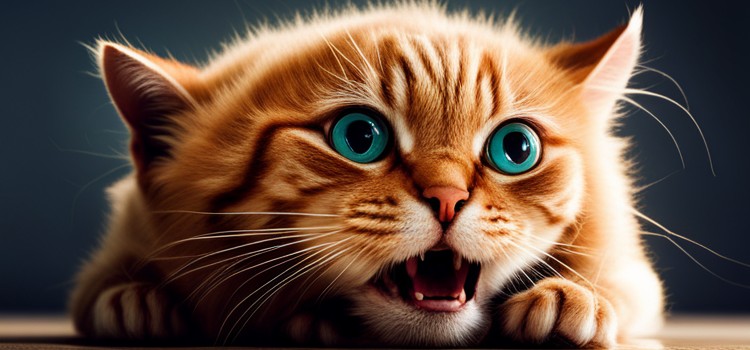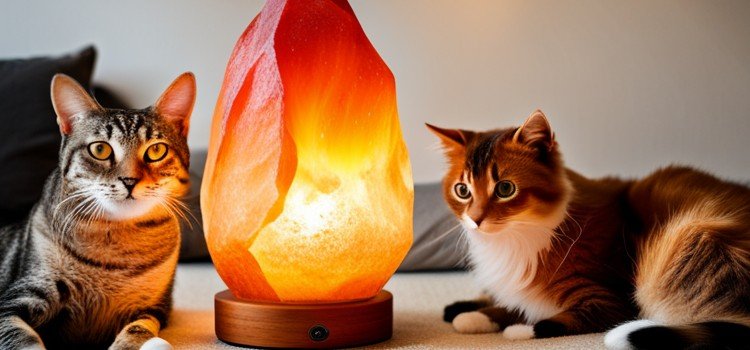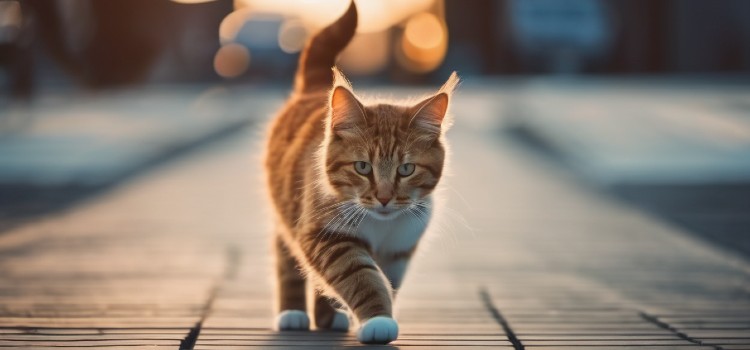As an Amazon Associate committed to the mission of improving the lives of our readers, Live-Clear.com receives a small commission from eligible purchases made through our affiliate links. This revenue enables us to keep producing insightful articles and other material.
Cats may huff during play as a way to show frustration or communicate excitement. It is a common behavior among cats that indicates they are engaged in playtime.
To understand the reasons behind this behavior, it is important to pay attention to the cat’s body language and vocalization during play. The huffing sound may be accompanied by growling or meowing, which can provide clues to the cat’s emotional state.
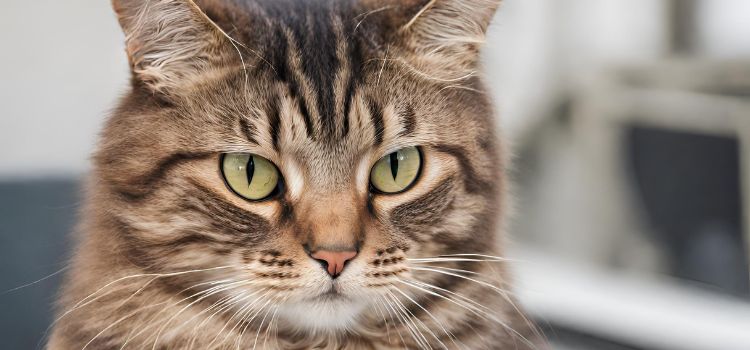
Additionally, the cat’s tail movements and posture may also indicate whether they are enjoying the play or becoming agitated. As a cat owner, it is crucial to monitor your cat’s behavior and respond accordingly to avoid any potential harm or aggression during playtime. By understanding your cat’s communication cues, you can ensure a safe and enjoyable playtime for both you and your feline friend.
Decode Your Cats Huffing
As a cat owner, you may have observed your furry feline huffing at you while playing. It can be confusing to understand what your cat is trying to communicate with this behavior. But fret not as we’re here to help you decode your cat’s huffing.
Understanding Playtime Body Language
Playtime is an essential part of every cat’s routine and how they communicate while playing is crucial for their caregivers to understand. The way a cat huffs while playing can indicate their mood and comfort level.
Some common body language cues that cats display during playtime include:
- Flattened ears
- Dilated pupils
- Wagging tail
- Batting at toys
Why Do Cats Huff
Cats have their unique ways of communicating, and huffing is one of them. When a cat huffs, it’s usually to indicate they are annoyed, frustrated, or overwhelmed. It’s their way of expressing their discomfort and asking you to back off.
However, it’s not entirely negative, and sometimes cats huff when they are overly excited and stimulated during playtime.
Different Types Of Cat Huffing And Their Meanings
Cats huff in different ways to convey varying messages. Here are some common types of huffing and their meanings:
| Huff Type | Meaning |
|---|---|
| Breathy Huff | Indicates excitement and eagerness to play. |
| Low-Pitched Huff | Shows annoyance or irritation and a request to stop. |
| Rapid Huffing | Displays aggression and a warning to back off. |
By understanding your cat’s huffing behavior, you can tailor your playtime sessions to suit their mood and avoid triggering negative emotions in your furry companion.
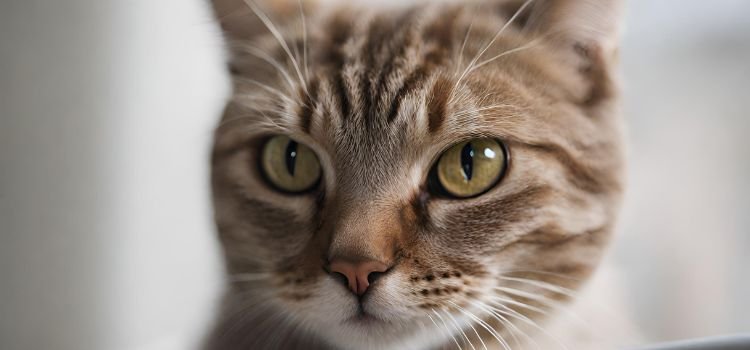
The Psychology Of Playtime
During playtime, cats may huff at their owners as a form of communication. This is a way of asserting dominance and expressing excitement, but it can also signify frustration or confusion. Understanding the psychology of playtime can help cat owners better communicate with their furry friends.
Playing with your cat is not only fun but also has psychological benefits. Playtime activates your cat’s predatory instincts and promotes mental stimulation. Moreover, it helps your cat release pent-up energy and stress, which makes them calm and content. However, during playtime, cats can communicate through some weird behaviors like huffing, hissing, and growling.
The Importance Of Playtime
Playing with your cat regularly benefits both you and your furball. It gives you an opportunity to bond and create memorable experiences with your feline friend. For cats, playtime is an essential activity that helps them express their natural instincts, promotes physical and mental health, and contributes to their overall wellbeing.
Why Cats Use Communication During Playtime
During playtime, cats use various communication tactics to establish dominance, assert boundaries, and express their emotions. For instance, when your cat huffs at you during playtime, it could be a sign of frustration or a way to regulate the intensity of the play. Alternatively, it could be a sign of contentment and pleasure.
How Communication Enhances The Bond With Your Cat
Understanding your cat’s communication style plays a vital role in strengthening the bond between you and your pet. Pay attention to their body language and vocal cues during playtime, and adjust your interaction accordingly. By responding to your cat’s huffs and other sounds, you signal that you value their opinions and desires. This helps your cat feel more comfortable, safe, and loved. Over time, playing with your cat can result in a deeper understanding and stronger relationship between you and your furry companion.
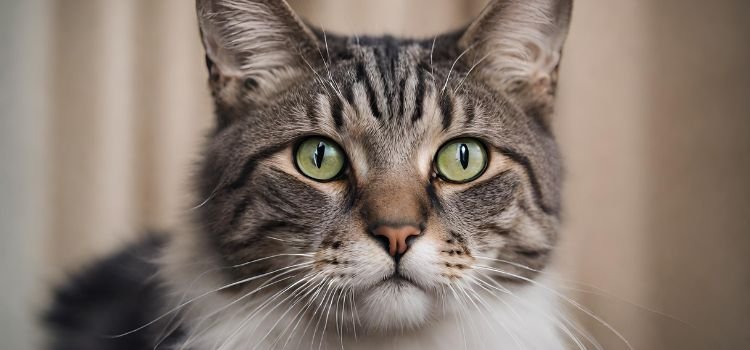
Identifying Nonverbal Cues
Cats mainly communicate through non-verbal cues, and huffing can indicate frustration during playtime. Look out for other signals such as flattened ears or dilated pupils to understand your cat’s emotions better.
Cats are fascinating creatures with their own set of nonverbal cues and behaviors that they use to communicate with their owners. One of these behaviors is huffing, which can occur during playtime with your furry friend. Understanding what your cat’s posture, facial expressions, tail movements, and ear positions mean can help you decode their nonverbal cues and better engage in playtime with them.
Body Posture
Cats use their bodies to communicate their moods and intentions. When your cat is huffing, they may be in an aggressive or defensive posture. They may have their back arched with fur standing on end, ready to spring into action. Alternatively, your cat may be crouched low with their ears flat against their head, indicating that they are frightened or angry. Recognizing these body postures can help you adjust your play behavior accordingly and avoid getting scratched or bitten.
Facial Expressions
In addition to body posture, cats also use facial expressions to convey their emotions. A cat who is huffing may show signs of aggression with dilated pupils, a wrinkled nose, and bared teeth. On the other hand, a fearful cat may have narrowed eyes and a tense jaw. Paying close attention to your cat’s facial expressions can help you understand their mood and react appropriately.
Tail Movements
A cat’s tail can indicate many different emotions, from excitement to aggression. When playing with your cat, watch their tail to see if it is twitching or lashing back and forth, which can be a sign that they are agitated or annoyed. Alternatively, a tail held high and puffed up indicates playfulness and excitement. Be aware of your cat’s tail movements to help you better understand their play behavior.
Ear Positions
Finally, a cat’s ear positions can give you a clue about their mood while playing. When a cat is huffing, they may hold their ears back or to the side, indicating aggression or fear. However, if your cat’s ears are upright and pointed forward, they may be interested and engaged in playtime. Watching your cat’s ears can help you recognize their emotional state and respond appropriately.
Identifying nonverbal cues is crucial to understanding your cat’s behavior and communicating effectively during playtime. By paying attention to your cat’s body posture, facial expressions, tail movements, and ear positions, you can better decode their emotions and create a positive and enjoyable play experience for both you and your furry friend.

The Science Behind Cat Communication
Cats communicate in several ways, including huffing, which is a sign of annoyance or frustration during playtime. This behavior comes from their wild ancestors’ hunting instincts, which they use to show aggression towards prey. Understanding your cat’s body language and vocalizations can help you communicate better with your feline friend.
If you’re a cat owner, you might have noticed your furry little friend huffing at you while playing. While it’s easy to interpret the sound as irritation or annoyance, it’s essential to understand that cats communicate in many ways. From purring to hissing, cats have various vocalizations that convey their emotions and intentions.
Moreover, cats use their body language and pheromones to communicate with their owners and other cats. In this blog post, we’ll look at the science behind cat communication and decode the message behind your cat’s huffing sound.
How Cats Use Different Sounds And Tones
Cats are masters of vocalization, and they use different sounds and tones to convey their emotions. For example, when your cat purrs, it means they’re happy and content. On the other hand, if they hiss or growl, it’s an indication that they’re fearful, anxious, or angry. Similarly, when your cat huffs during playtime, it’s their way of telling you to stop or slow down. As a cat owner, it’s essential to understand the various vocalizations of your cat to provide them with appropriate care and attention.
How Cats Use Body Language
Apart from vocalization, cats use their body language to communicate with their owners and other cats. If your cat arches their back and puffs up their fur, they’re showing aggression or fear. Similarly, if they lie on their back with their belly exposed, it’s a sign of trust and contentment. During playtime, if your cat’s tail is twitching or lashing, it means they’re getting overstimulated, and it’s time to take a break. Understanding your cat’s body language is crucial to maintaining a healthy and happy relationship with them.
How Different Cats Communicate With Each Other
While all cats use vocalizations and body language to communicate, different cats might have unique personalities and communication styles. For example, some cats might enjoy playing and be vocal during playtime, while others might prefer to stay silent. Similarly, some cats might be more reserved and communicate less, while others might be more expressive and demand attention. As a cat owner, it’s essential to understand your cat’s communication style and adapt accordingly.
Understanding cat communication is crucial to maintaining a healthy and happy relationship with your furry friend. By paying attention to their vocalizations, body language, and communication style, you’ll be able to provide them with appropriate care, attention, and love. So the next time your cat huffs during playtime, remember it’s their way of telling you to slow down or stop.
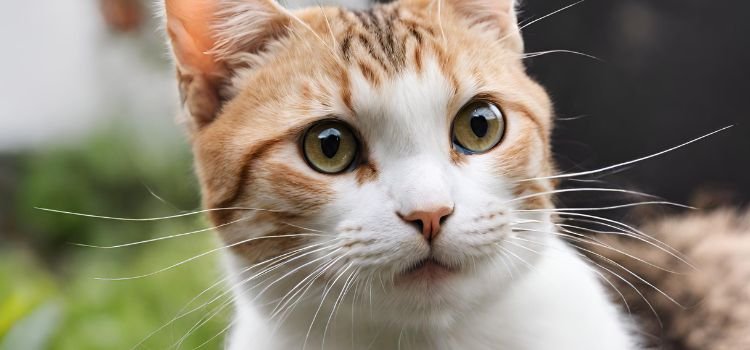
Tips To Encourage Healthy Play And Communication
Cats can huff at their owners during playtime to communicate excitement or anxiety. You can encourage healthy play and communication by respecting your cat’s boundaries, using toys to mimic hunting behavior, and ending play sessions before your cat becomes overstimulated.
As a cat parent, understanding their huffing behavior is crucial for building a healthy relationship. Cats often communicate their emotions through body language and vocalizations, and huffing is one of the ways cats express their disapproval or annoyance. However, this does not mean your feline companion is not enjoying playtime with you. With the help of some essential tips, you can encourage healthy play and communication with your cat.
Providing A Stimulating Environment
To encourage healthy playtime behavior, it is essential to provide your cat with a stimulating environment. Add toys and climbing structures that are appropriate for their age and activity level. Providing a scratching post or a cardboard box can be a great way to encourage interactive play. This can also provide a healthy outlet for your cat’s natural instincts and behaviors.
Learning Your Cat’s Preferences
Cats can be very particular about their preferences in play style. Some cats prefer chasing toys, while others may prefer toys that mimic real prey. Understanding your cat’s preferences will help you identify which toys are suitable for them and will make playtime more enjoyable. Additionally, learning their body language and vocalizations will help you understand when they are reaching their limits or when they are overstimulated.
Establishing A Consistent Playtime Routine
Establishing a consistent playtime routine can help your cat understand when it’s time to play and when it’s time to relax. A typical playtime routine should last a few minutes to provide mental stimulation and exercise. Avoid interrupting your cat’s playtime abruptly, as this can often lead to frustration or annoyance.
Understanding Limits And Avoiding Overstimulation
As mentioned earlier, learning your cat’s behavior and preferences can help you understand their limits and avoid overstimulation. Overstimulation can lead to aggressive behavior, and it is crucial to avoid such situations. Avoid forcing your cat to play or petting them aggressively if they are not interested. This can negatively impact their willingness to participate in playtime behavior in the future.
Rewarding Positive Communication And Play Behaviors
Positive reinforcement is an excellent way to encourage healthy play and communication with your cat. When your cat displays positive play and communication behaviors, such as friendly vocalizations and appropriate body language, reward them with treats or attention. This will encourage them to continue with such behaviors, helping you build a more robust bond with your feline companion.
Building a healthy playtime routine with your cat is essential for developing a strong and long-lasting relationship. By following these tips, you can encourage positive play and communication behaviors and create a stimulating environment for your cat. Remember, it takes patience and time to understand your cat’s behavior and preferences, but it is worth the effort to build a lifetime bond with your feline friend.
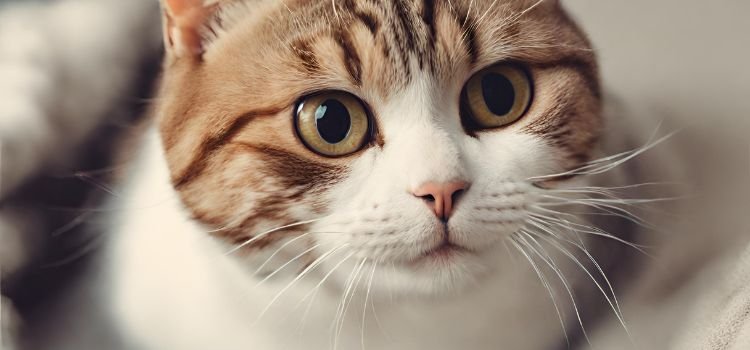
Common Misconceptions About Cat Huffing
Cats are known for their unique way of communication, and huffing is one of them. If your cat huffs at you while playing, don’t be alarmed. This is their way of expressing themselves. However, there are some misconceptions about cat huffing that need to be addressed to better understand our feline friends.
Misreading Signals As Aggression
One of the most common misconceptions about cat huffing is that it’s a sign of aggression. This is far from the truth. When cats huff, it’s usually a sign of annoyance or irritation rather than aggression. It’s their way of saying “enough is enough.”
It’s essential to differentiate between cat huffing and aggression. Aggression is usually accompanied by other signs such as growling, hissing, or even physical attacks. On the other hand, huffing is a clear indication that the cat needs a break from the play activity.
Assuming All Cats Communicate The Same Way
Another common misconception is the assumption that all cats communicate the same way. However, just like humans, cats have unique personalities and preferences. Some cats may be more vocal, while others may use body language to communicate. In the same vein, some cats may prefer to huff to express their displeasure, while others may use different vocalizations.
As a cat owner, it’s essential to learn your cat’s unique way of communication. This will help you understand their needs and prevent any misunderstandings.
Ignoring Huffing And Other Communication Cues
Finally, cat owners may wrongly assume that huffing is just another cute quirk without understanding its significance. Ignoring huffing and other communication cues can result in misunderstandings and potentially harm the cat-human relationship.
When a cat huffs during playtime, it’s crucial to respect their boundaries and give them space. This will prevent the cat from feeling overwhelmed or frustrated, resulting in a positive experience for both parties.
In conclusion, cat huffing is an essential communication tool that cats use to express themselves. It’s up to us as cat owners to understand their unique way of communication, respect their boundaries, and build a positive cat-human relationship.
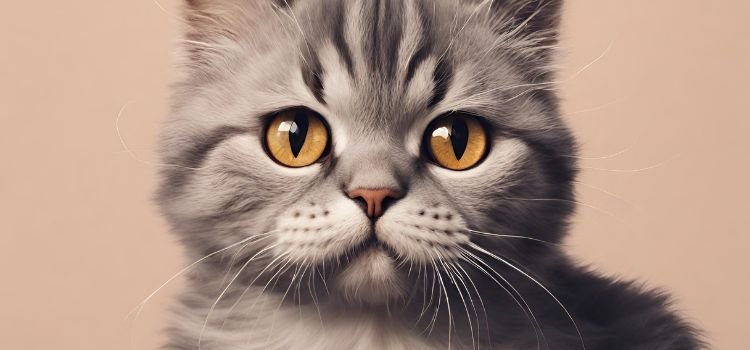
Conclusion
To conclude, huffing behavior in cats is quite common, and it indicates various emotions such as excitement, frustration, and anxiety. Your cat may huff at you while playing because they are overstimulated or want to set boundaries. As a responsible cat owner, it is important to understand their body language and respect their feelings.
Frequently Asked Questions Of Why Does My Cat Huff At Me When Playing
When a cat huffs at you, it means they are irritated, angry, or feeling threatened. It’s important to give them space and avoid any actions that may trigger further aggression. It’s also essential to identify the cause of their behavior, such as environmental stress or medical conditions, and address it accordingly.
Cats sometimes snort when playing because they get excited and their breathing becomes irregular. This is normal behavior and nothing to worry about. However, if your cat shows other symptoms, such as difficulty breathing or coughing, it’s best to consult a veterinarian.
Cat huffing is not safe for cats as it can cause respiratory problems or be harmful due to the chemicals in the substance. It can also affect the senses and behavior of the cat. It is not recommended to engage in cat huffing.
Cats huff to show annoyance or frustration during playtime. It’s their way of communicating.
Yes, it’s quite normal for cats to huff when they’re playing with their owners or toys.
With some patience and observation, you can build a healthy and happy relationship with your feline friend. Happy playing!
Amazon and the Amazon logo are trademarks of Amazon.com, Inc, or its affiliates.

